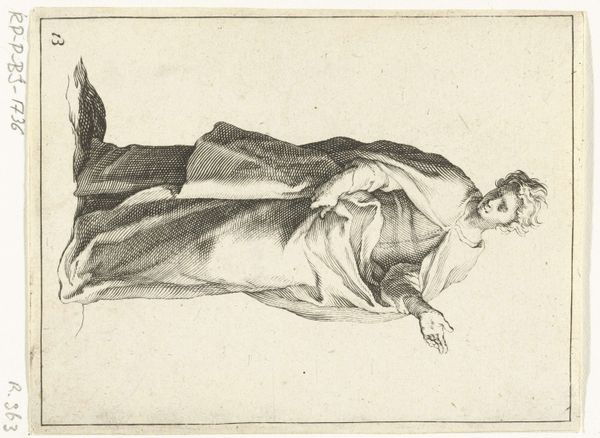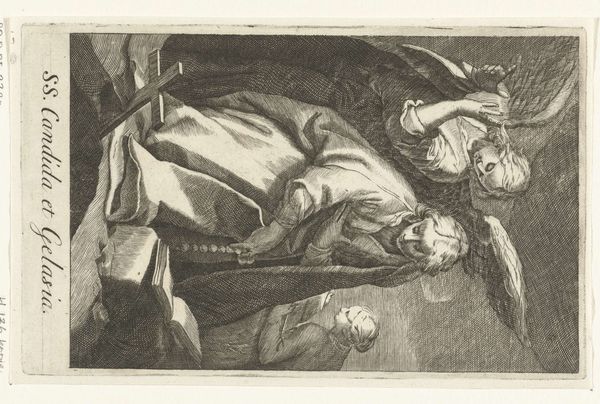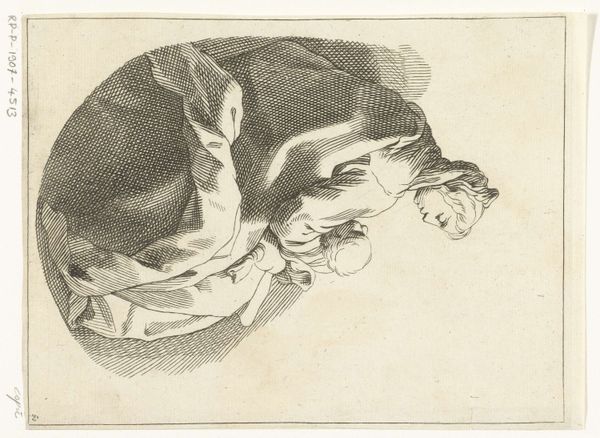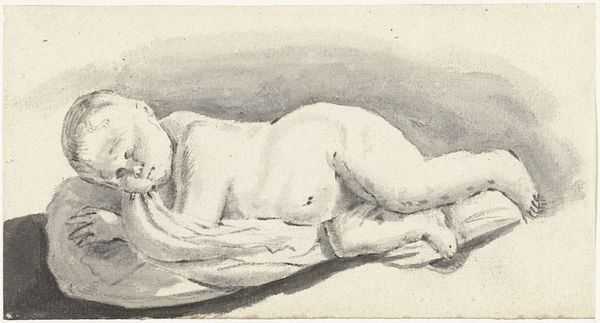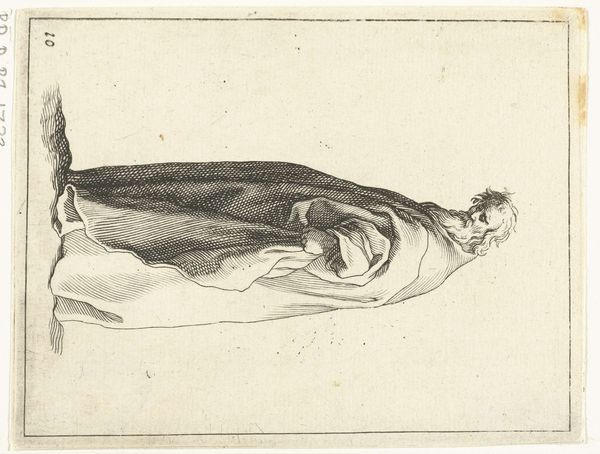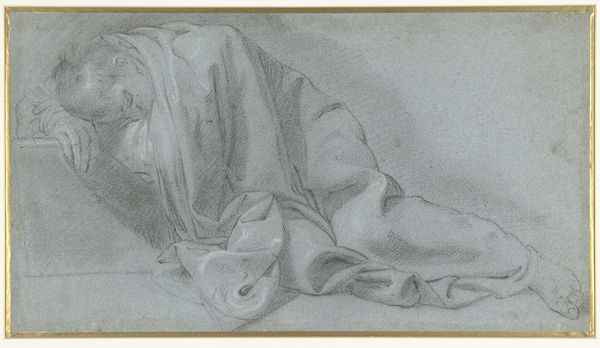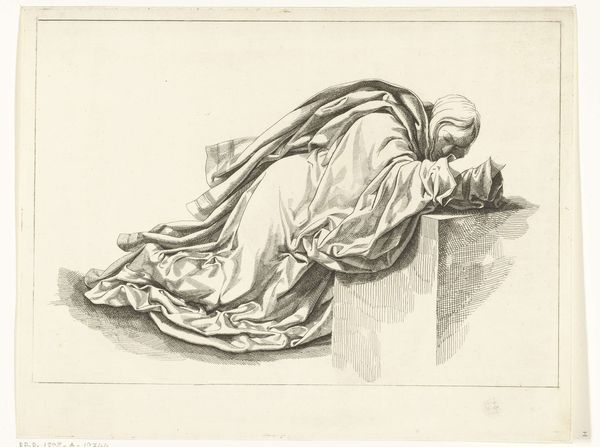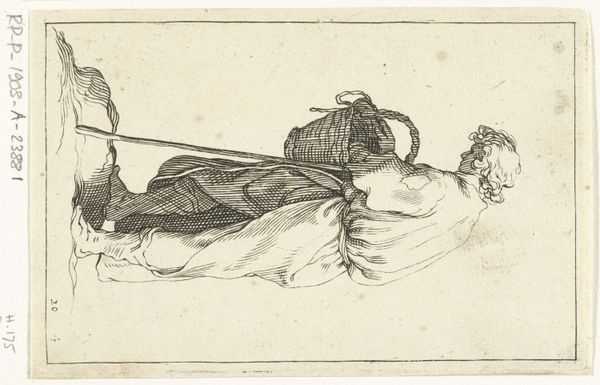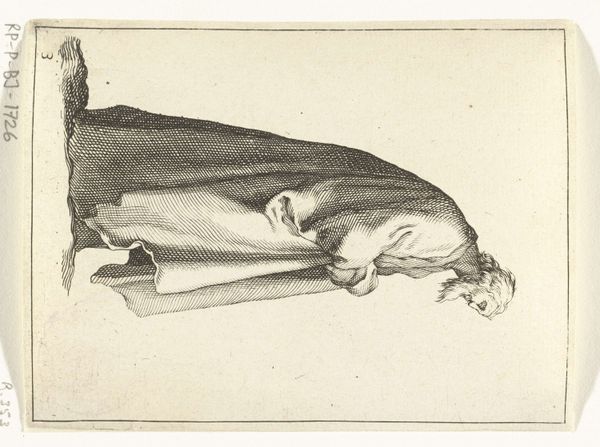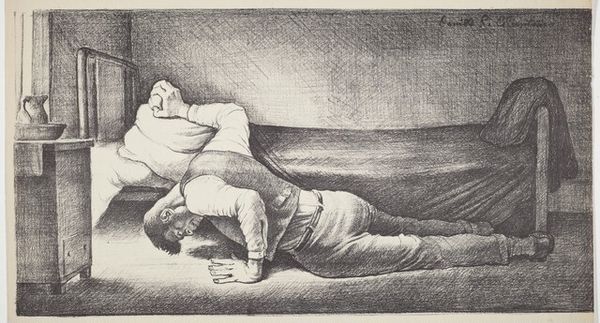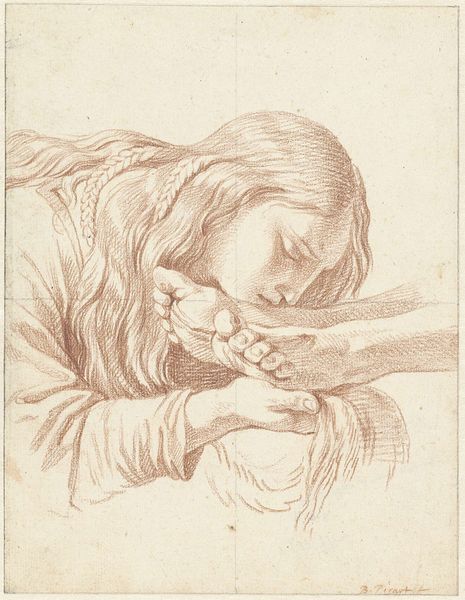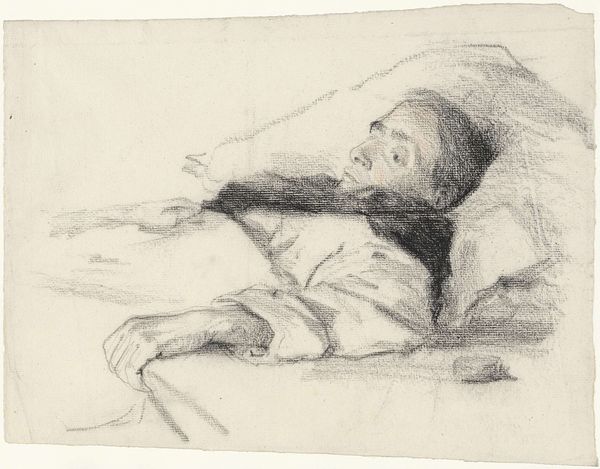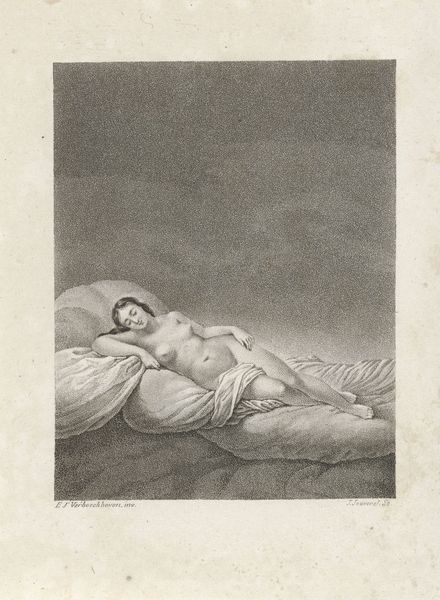
drawing, print, etching, paper
#
portrait
#
drawing
#
baroque
# print
#
pen illustration
#
etching
#
paper
Dimensions: height 120 mm, width 90 mm
Copyright: Rijks Museum: Open Domain
Editor: So this is Frederick Bloemaert's "Vrouw met sluier over haar hoofd," which translates to "Woman with a veil over her head," from after 1635. It's a print – an etching, I believe. I'm struck by the starkness, how the veil both conceals and reveals. What do you see in this piece, beyond just the surface? Curator: I see a potent intersection of faith, gender, and social constraints in 17th-century Dutch society. Bloemaert’s rendering isn’t simply a portrait; it’s a commentary on the expectations placed upon women. Consider the veil itself. What does it symbolize beyond modesty? Could it also represent a silencing, a restriction of agency? Editor: That’s interesting. I hadn’t thought about it in terms of agency. It just seemed like a simple portrait. Curator: Look closer. The etching's detail emphasizes the weight of the fabric, the way it frames and perhaps imprisons her face. Who was she? What choices did she have? What stories did she have the possibility to tell, or not? These images of women should prompt these questions, as images become primary evidence. It makes one reflect on class and access, who got to tell these stories. Does that resonate with you? Editor: It does, now that you point it out. I suppose I was focusing on the aesthetics, and not on the potential political implications of the work. Curator: Exactly. By situating the piece in its historical and social context, we unveil the complex layers of meaning. The image transcends simple beauty; it becomes a testament to, and a critique of, the power structures that shaped women’s lives then, and continue to impact us now. Editor: That really changes how I see this work. I'll definitely remember to consider the historical and social elements to appreciate more deeply what I'm viewing. Curator: Excellent. It’s through these conversations that we learn to see art as a mirror reflecting both the past and our present.
Comments
No comments
Be the first to comment and join the conversation on the ultimate creative platform.
